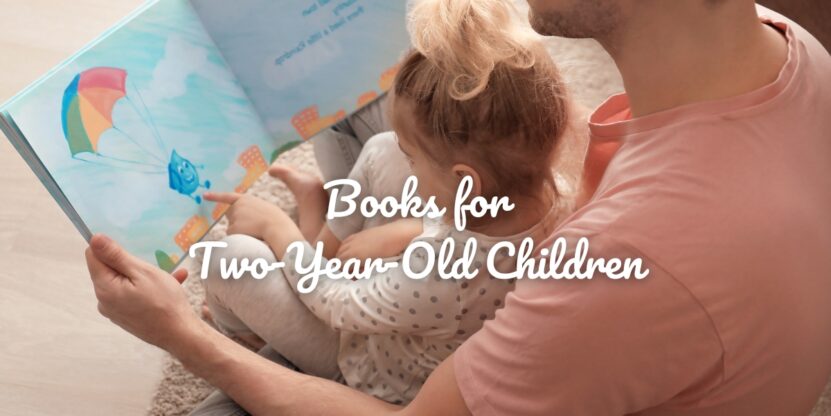In the magical world of children’s literature, there’s an abundance of wonderful stories to captivate and inspire the minds of our youngest readers. As parents, grandparents, or caregivers, choosing the perfect books for your little ones can be both exciting and overwhelming. To make this task easier, we’ve sought the expertise of educators, child psychologists, and literary aficionados to compile a list of 10 highly recommended books specifically tailored for two-year-olds.
These engaging and age-appropriate reads will not only entertain but also foster a love for reading, stimulate cognitive development, and enhance parent-child bonding. So, let’s embark on this literary journey and discover the top 10 books that will surely delight and nurture the minds of your two-year-old children!
1.”The Very Hungry Caterpillar” by Eric Carle
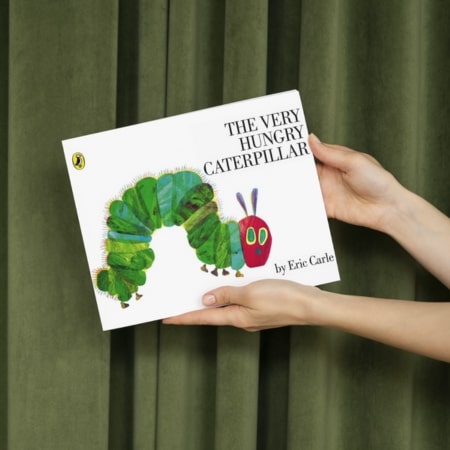
This classic story follows the journey of a small, ravenous caterpillar that emerges from an egg on a warm, sunny day. As the day’s progress, the hungry caterpillar begins to eat its way through a delightful assortment of fruits, leaves, and other foods, ultimately teaching young readers about counting, the days of the week, and the process of metamorphosis.
The vivid images not only capture the imagination of young readers but also provide an opportunity to learn about various fruits and healthy eating habits. As the caterpillar munches through the pages, children are introduced to concepts such as counting from one to five and the days of the week, making the book an excellent early learning tool.
One of the primary reasons experts recommend this book is its ability to teach counting and the days of the week in a fun and engaging way. As the caterpillar eats through various fruits and foods, young readers are encouraged to count along, effectively transforming a simple story into a practical learning tool. The book’s vivid illustrations also introduce children to different types of fruits, promoting healthy eating habits and a basic understanding of nature.
Another reason “The Very Hungry Caterpillar” is highly recommended by experts is its portrayal of the process of metamorphosis.By learning about the caterpillar’s transformation into a butterfly, children are exposed to the concept of life cycles, which can serve as a foundation for further exploration of science and biology.
2.”Goodnight Moon” by Margaret Wise Brown
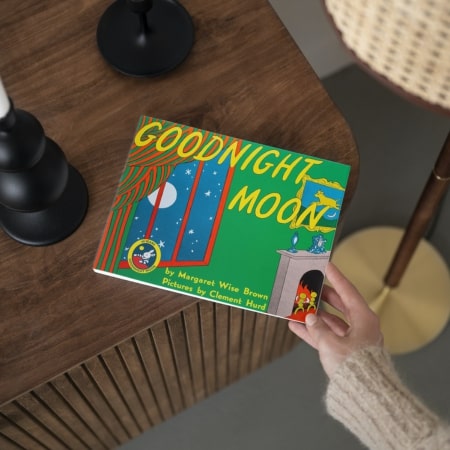
One of the primary reasons “Goodnight Moon” has stood the test of time is its serene, rhythmic prose. The book follows a young rabbit as it bids goodnight to various objects and characters in the great green room, from the moon and stars to the familiar items that fill the room. This repetition creates a sense of comfort and familiarity, allowing children to participate in the story as they say goodnight to their own surroundings.
Reading the book together creates meaningful interaction, as caregivers can encourage young readers to identify and say goodnight to the various items in the room. This shared experience fosters a sense of security and emotional connection, which is vital for a child’s emotional and cognitive development.
A key reason experts recommend “Goodnight Moon” is its gentle, rhythmic prose, which creates a calming atmosphere for young readers. This repetition not only provides a sense of comfort and familiarity but also supports the development of language and memory skills in children. The captivating illustrations by Clement Hurd play a significant role in the book’s appeal to children. The warm, muted colors and cozy, detailed images of the room spark a child’s imagination while evoking a sense of safety and tranquility. The gradual darkening of colors throughout the book mirrors the progression of nighttime, making it an ideal bedtime story that helps children unwind and settle down for sleep.
3.”Dear Zoo”by Rod Campbell
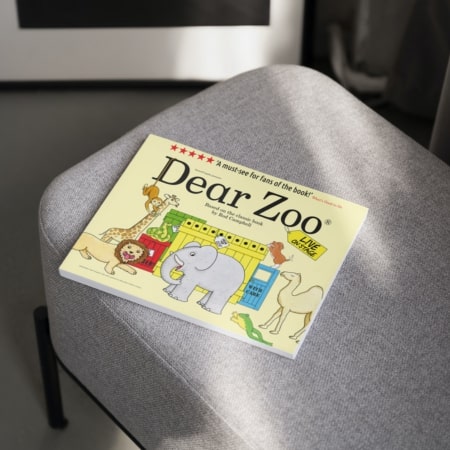
“Dear Zoo” is a classic children’s book written and illustrated by Rod Campbell. The story follows a child who writes to the zoo, requesting a pet. In response, the zoo sends a series of animals, each of which has some sort of issue that makes it unsuitable as a pet. Finally, the zoo sends a perfect pet – a puppy – and the child happily keeps it.
The book is known for its engaging and interactive format, with lift-the-flap pages that reveal the animals the zoo has sent. The simple and repetitive text also makes it easy for young children to follow along and participate in the story. The animals in the book are drawn in a friendly and cartoonish style, making them appealing to young readers.
The themes of the book include problem-solving and decision-making, as the child has to decide which animals are suitable pets and which are not. It also touches on the idea of responsibility, as the child ultimately takes care of the puppy and provides it with a loving home.
The story of “Dear Zoo” also resonates with children, as it involves a child seeking a pet and the excitement and anticipation of receiving one. The zoo’s animals add humor and surprise to the story, and the child’s decision-making process when determining which animal is suitable as a pet is relatable to children who are learning to make their own decisions.
“Dear Zoo” has been a beloved children’s book since its publication in 1982 and has won multiple awards.
4.”Brown Bear, Brown Bear, What Do You See?” by Bill Martin Jr. and Eric Carle
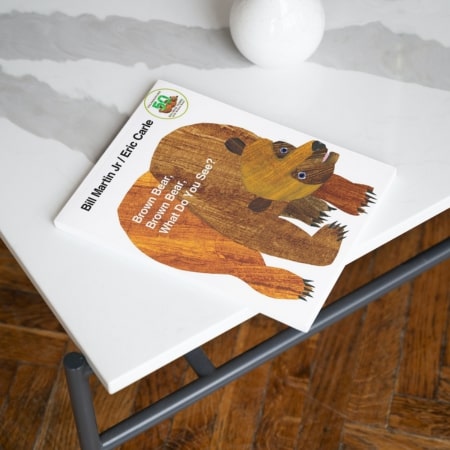
“Brown Bear, Brown Bear, What Do You See?” is a children’s picture book written by Bill Martin Jr. and illustrated by Eric Carle. The book follows a repetitive pattern of introducing animals and their colors to young readers.
The story starts with a brown bear who sees a red bird, who in turn sees a yellow duck, and so on. Each animal introduces the next, leading to a sequence of bright and vivid illustrations that captivate young readers. The book teaches children about colors and animal names, helping them build their vocabulary and language skills.
The book’s illustrations are vibrant and unique, with Eric Carle’s signature collage style of using hand-painted paper to create a textured and layered effect. The animals are presented in a bold, larger-than-life style that makes them easy to recognize and memorable for children.
“Brown Bear, Brown Bear, What Do You See?” has become a beloved classic in children’s literature, selling over 16 million copies worldwide since its publication in 1967. The book’s success lies in its simple yet engaging story and eye-catching illustrations, making it a perfect read-aloud book for parents and teachers to share with young children.
Children are fascinated by the animal kingdom and love learning about different species and their characteristics. The book provides a fun and interactive way for children to learn about different animals and their colors, helping to build their knowledge of the world around them. It is a must-have for any child’s library and a surefire way to get them interested in reading and learning.
5.”Chicka Chicka Boom Boom” by Bill Martin Jr. and John Archambault
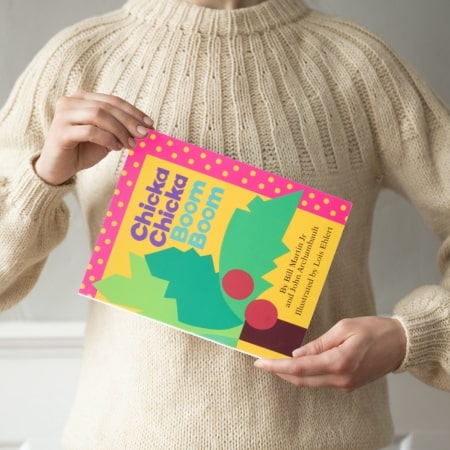
“Chicka Chicka Boom Boom” is a children’s book written by Bill Martin Jr. and John Archambault, and illustrated by Lois Ehlert. The book follows the adventures of the letters of the alphabet as they climb up a coconut tree. The letters are eager to reach the top of the tree and join in the fun, but as more and more letters climb up, the tree starts to shake and eventually, “boom” goes the tree.
The text of the book is written in a lively, rhythmic style that makes it fun to read and easy to remember. The repetitive nature of the text and the catchy rhyme make it an ideal choice for young children who are just learning to read, as well as for those who are still developing their language skills.
The bright and colorful illustrations in the book are a visual treat for children and help to bring the story to life. The illustrations also provide an opportunity for children to learn about different shapes, colors, and patterns, helping to develop their visual recognition skills.
One of the key themes of the book is the importance of cooperation and teamwork. As the letters work together to climb the tree, children learn about the importance of supporting each other and working together towards a common goal. The book also promotes the idea that everyone is important and has a role to play, regardless of their size or shape.
Overall, “Chicka Chicka Boom Boom” is a timeless classic that continues to captivate children with its lively text, bright illustrations, and important lessons. It is a must-have for any child’s library and a surefire way to get them interested in reading and learning.
6.”Peek-A Who?” by Nina Laden
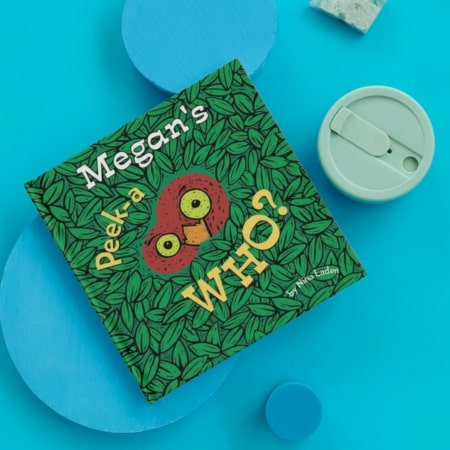
This is a popular children’s book that has been entertaining young readers for years. The book’s interactive flaps, simple text, and colorful illustrations make it an ideal choice for young children and help to foster a love of reading and learning.
The book is designed to engage young children and help them develop their visual recognition skills. The book features a series of interactive flaps that allow children to “peek” at different animals and guess who they are based on their distinctive features.
The text of the book is simple and repetitive, making it easy for young children to follow along and join in. The illustrations are bright and colorful, and feature a variety of different animals, including dogs, cats, monkeys, and more. The interactive flaps add an element of surprise and excitement, as children lift them up to reveal the next animal.
One of the key themes of the book is the importance of observation and attention to detail. Children are encouraged to look closely at the illustrations and to pay attention to the subtle differences between the animals, helping to develop their visual recognition skills. The book also promotes the idea of exploration and discovery, as children lift the flaps to see what’s hiding underneath.
In addition, “Peek-A Who?” is a fun and interactive way for children to learn about different animals and their characteristics. The book provides a memorable and engaging way for children to learn about different species and to develop their knowledge of the animal kingdom.
Overall, “Peek-A Who?” is a delightful and engaging book that is sure to captivate young children. Its simple text, bright illustrations, and interactive flaps make it an ideal choice for young readers, and a must-have for any child’s library.
7.”Where’s Spot?” by Eric Hill
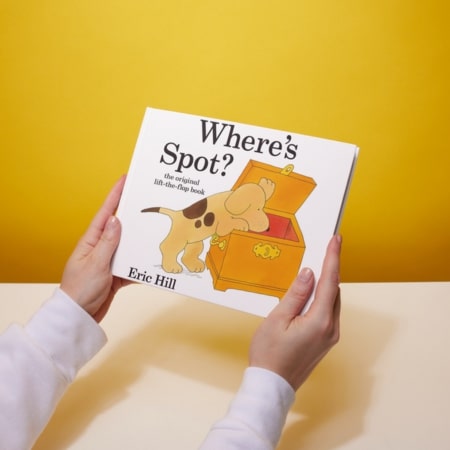
“Where’s Spot?” by Eric Hill is a classic children’s book that has been entertaining young readers for generations. The book’s simple text, colorful illustrations, and interactive elements make it an ideal choice for young children and help to foster a love of reading and learning.
One of the key reasons why children love “Where’s Spot?” is its interactive design. The book features a series of flaps that allow children to search for Spot, a mischievous puppy, as he hides throughout the pages. This interactive aspect of the book makes it engaging and fun for young children, encouraging them to be active participants in the reading experience.
The text of the book is simple and repetitive, making it easy for young children to follow along and join in. The illustrations are bright and colorful, and feature a variety of different settings, including Spot’s home, the park, and more. This helps to engage children’s imagination and make the story come to life.
Another reason why children enjoy “Where’s Spot?” is because it promotes the idea of observation and attention to detail. Children are encouraged to look closely at the illustrations and to search for Spot, helping to develop their visual recognition skills. This is an important aspect of their cognitive development and helps to lay the foundation for future learning.
In addition, “Where’s Spot?” is a fun and interactive way for children to learn about different environments and the objects that can be found in them. The book provides a memorable and engaging way for children to learn about their world and to develop their knowledge of the world around them.
8.”We’re Going on a Bear Hunt” by Michael Rosen and Helen Oxenbury
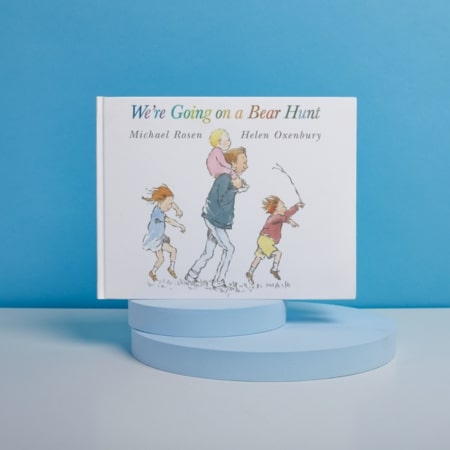
“We’re Going on a Bear Hunt” by Michael Rosen and Helen Oxenbury is a classic children’s book that has been delighting young readers for generations. The book’s rhythmic text, colorful illustrations, and imaginative storyline make it an ideal choice for young children and help to foster a love of reading and learning.
One of the key reasons why children love “We’re Going on a Bear Hunt” is its imaginative storyline. The book follows a family of adventurers as they go on a bear hunt, encountering various obstacles along the way, including tall grass, a river, and a snowstorm. This imaginative and adventurous storyline captures children’s imaginations and encourages them to use their own imaginations to bring the story to life.
The reason why children enjoy “We’re Going on a Bear Hunt” is because it promotes the idea of exploration and discovery. The family’s journey to find the bear encourages children to explore their own world and discover new things. The book also promotes the idea of perseverance, as the family encounters various obstacles along the way and must find a way to overcome them.
In addition, the book is a fun and interactive way for children to learn about different environments and the challenges that can be found in them. The book provides a memorable and engaging way for children to learn about their world and to develop their knowledge of the world around them.
Overall, this is a delightful and engaging book that is sure to captivate young children. Its imaginative storyline, rhythmic text, and colorful illustrations make it an ideal choice for young readers and a must-have for any child’s library.
9.”Llama Llama Red Pajama” by Anna Dewdney
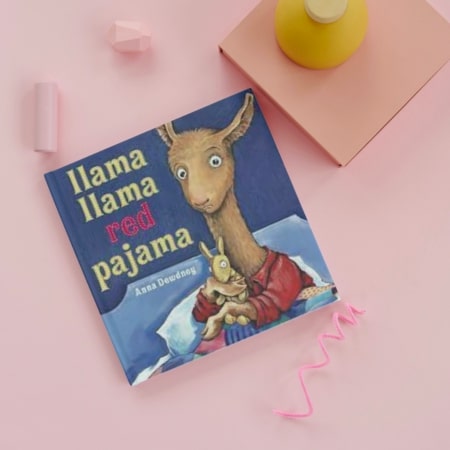
“Llama Llama Red Pajama” by Anna Dewdney is a beloved children’s book that has been entertaining young readers for years. The book’s rhyming text, adorable illustrations, and relatable storyline make it an ideal choice for young children and help to foster a love of reading and learning.
One of the key reasons why children love “Llama Llama Red Pajama” is its relatable storyline. The book follows Llama Llama as he becomes upset when his mother leaves for the evening, causing him to feel scared and alone. This emotional storyline speaks to the feelings and experiences of young children, helping them to understand and process their own emotions.
The text of the book is written in a rhyming style, making it fun to read and easy to remember. The illustrations are adorable, featuring Llama Llama and his friends in a variety of different situations. The combination of text and illustrations helps to engage children’s imagination and make the story come to life.
Another reason why children enjoy “Llama Llama Red Pajama” is because it promotes the idea of emotional intelligence and empathy. The book helps children to understand and process their own emotions, as well as to develop empathy for others. The story also teaches children the importance of communication and the comfort that can be found in the love and support of family.
In addition, the book is a fun and engaging way for children to learn about different emotions and the experiences that can cause them. It provides a memorable and engaging way for children to learn about their own emotions and develop their emotional intelligence.
Overall, “Llama Llama Red Pajama” is a delightful and engaging book that is sure to captivate young children. Its relatable storyline, rhyming text, and adorable illustrations make it an ideal choice for young readers and a must-have for any child’s library
10.”Press Here” by Hervé Tullet
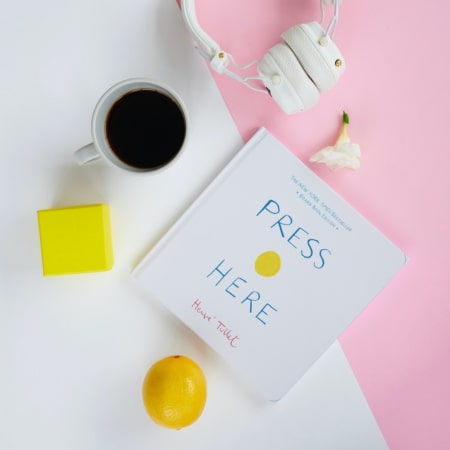
“Press Here” by Hervé Tullet is a unique and captivating children’s book that has been entertaining young readers for years. The book’s interactive design, playful illustrations, and imaginative storyline make it an ideal choice for young children and help to foster a love of reading and learning.
One of the key reasons why children love “Press Here” is its interactive design. The book invites children to press, tilt, shake, and clap the book to bring the story to life. This interactive aspect of the book makes it engaging and fun for young children, encouraging them to be active participants in the reading experience.
Another reason why children enjoy “Press Here” is because it promotes creativity and imagination. The interactive design and imaginative storyline encourage children to use their own imaginations to bring the story to life. The book also encourages children to be curious and to explore their world, as they experiment with different ways to interact with the book.
In addition, “Press Here” is a fun and engaging way for children to learn about cause and effect. The interactive design of the book helps children to understand how their actions can have an impact on the story and the illustrations. This helps to develop their critical thinking and problem-solving skills.
Overall, “Press Here” is a delightful and engaging book that is sure to captivate young children. Its interactive design, playful illustrations, and imaginative storyline make it an ideal choice for young readers and a must-have for any child’s library.
Choosing the right books for two-year-old children can be a challenge, especially with the vast array of options available. It’s important to select age-appropriate, engaging, and educational books that will foster a love for reading and learning. In this article, we will answer some frequently asked questions about books for two-year-olds, helping you make informed decisions when selecting the perfect books for your little one.
Frequently Asked Questions (FAQ):
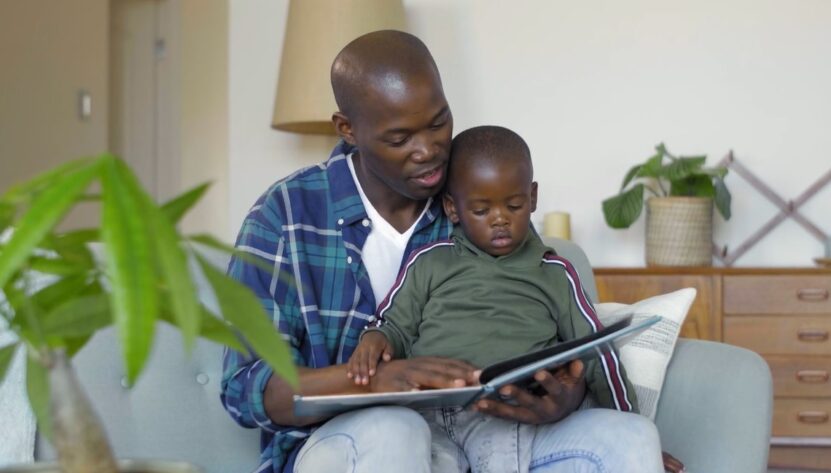
Q: When should I start reading to my child?
A: It’s never too early to start reading to your child. Experts recommend reading to your child from birth, as it helps with language development and fosters a stronger bond between parent and child.
Q: What types of books are best for two-year-olds?
A: At this age, children are still developing their fine motor skills, language, and understanding of the world around them. Therefore, it’s essential to choose books with simple text, repetitive phrases, and colorful illustrations. Board books, lift-the-flap books, and picture books with rhyming or rhythmic text are excellent choices for two-year-olds.
Q: How can I encourage my two-year-old to engage with books?
A: Make reading a fun and interactive experience by using different voices, pointing to illustrations, and asking questions about the story. Encourage your child to participate by repeating phrases, turning pages, and lifting flaps. Create a cozy reading environment and establish a regular reading routine, such as bedtime stories, to foster a positive association with books.
Q: Are books with educational content suitable for two-year-olds?
A: Yes, books with educational content can be both fun and engaging for two-year-olds. Look for books that introduce concepts such as colors, shapes, numbers, letters, and animals in a simple and entertaining way. However, it’s essential not to push your child to learn beyond their developmental stage; focus on fostering a love for reading and learning.

Q: Can two-year-olds enjoy books with more complex stories and characters?
A: While some two-year-olds may enjoy books with more complex stories and characters, it’s generally best to stick to simple and relatable storylines. Books that focus on everyday experiences, such as bedtime routines or visiting the park, can help your child make connections to their own life and learn about the world around them.
Q: How can I introduce my two-year-old to new vocabulary through books?
A: Choose books that include a variety of age-appropriate words and concepts. As you read, point to illustrations and describe what’s happening in the story using simple language. Ask your child questions about the story, encouraging them to use new words they’ve learned. This will help expand their vocabulary and improve their language skills.
Q: Is it essential to stick to age-specific books, or can I read more advanced books to my two-year-old?
A: While it’s important to select age-appropriate books for your two-year-old, there’s no harm in occasionally reading more advanced books together. However, ensure that the content is suitable and not too overwhelming. Reading more advanced books can expose your child to a richer vocabulary and more complex ideas, but it’s crucial to strike a balance and not push your child beyond their developmental stage.
Q: How can I tell if a book is age-appropriate for my two-year-old?
A: Check the publisher’s recommended age range, usually found on the book’s back cover or inside flap. Additionally, look for books with simple text, repetitive phrases, and engaging illustrations. Remember that every child is different, so choose books that match your child’s interests and developmental stage.

